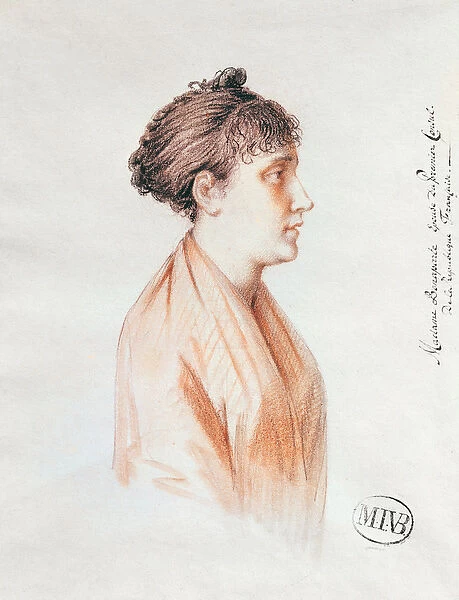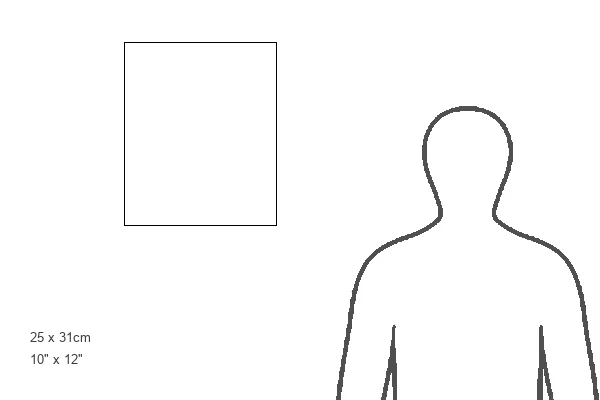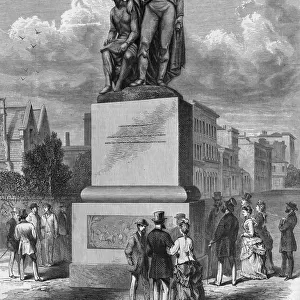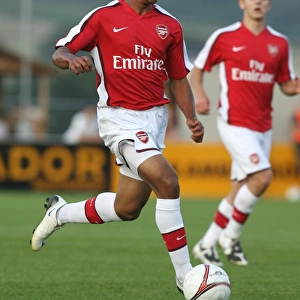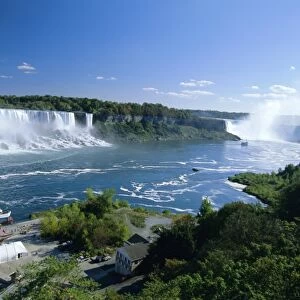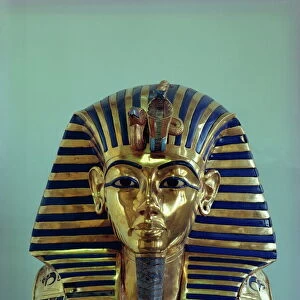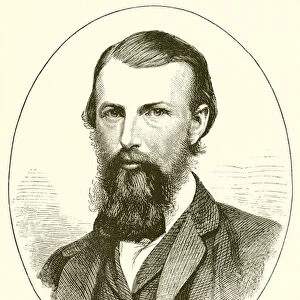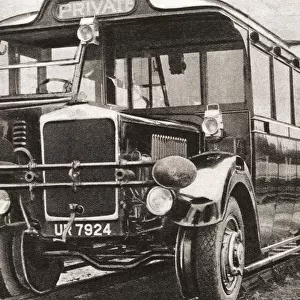Framed Print > Europe > France > Paris > Related Images
Framed Print : Madame Bonaparte (1763-1814), study for Entry of Bonaparte, First Consul, into
Please select a smaller print size for this image
![]()

Framed Photos from Fine Art Finder
Madame Bonaparte (1763-1814), study for Entry of Bonaparte, First Consul, into
XIR196998 Madame Bonaparte (1763-1814), study for Entry of Bonaparte, First Consul, into Antwerp on 18th July 1803 (Versailles) 1803-07 (red chalk on paper) by Bree, Mathieu Ignace van (1773-1839); 16.5x6.7 cm; Louvre, Paris, France; (add.info.: Josephine Tascher de la Pagerie; married to Bonaparte in 1796; study for the painting GIR 70358; from a series of 119 portraits; ); Belgian, out of copyright
Media ID 12752400
© www.bridgemanimages.com
12"x10" Modern Frame
Introduce a touch of elegance and history into your home with our exquisite framed prints from Media Storehouse. This stunning piece features a captivating study of Madame Bonaparte, painted by Bree in the late 1800s. The red chalk on paper artwork, titled "Madame Bonaparte (1763-1814), study for Entry of Bonaparte, First Consul, into Antwerp on 18th July 1803," is a captivating glimpse into the past, sourced from the renowned Bridgeman Images collection. Our high-quality framing enhances the beauty of this fine art find, making it a perfect addition to any room in your home or office. Bring history to life with this beautiful and intriguing work of art.
10x8 Print in an MDF Wooden Frame with 180 gsm Satin Finish Paper. Glazed using shatter proof thin plexi glass. Frame thickness is 1 inch and depth 0.75 inch. Fluted cardboard backing held with clips. Supplied ready to hang with sawtooth hanger and rubber bumpers. Spot clean with a damp cloth. Packaged foam wrapped in a card.
Contemporary Framed and Mounted Prints - Professionally Made and Ready to Hang
Estimated Image Size (if not cropped) is 25.4cm x 25.4cm (10" x 10")
Estimated Product Size is 25.4cm x 30.5cm (10" x 12")
These are individually made so all sizes are approximate
Artwork printed orientated as per the preview above, with landscape (horizontal) or portrait (vertical) orientation to match the source image.
FEATURES IN THESE COLLECTIONS
> Fine Art Finder
> Artists
> Mathieu Ignace van Bree
> Europe
> France
> Paris
> Related Images
EDITORS COMMENTS
This print showcases a study of Madame Bonaparte, also known as Josephine Tascher de la Pagerie, the wife of Napoleon Bonaparte. Created by Mathieu Ignace van Bree in 1803, this red chalk drawing measures 16.5x6.7 cm and is currently housed in the Louvre Museum in Paris. The study was made for the painting "Entry of Bonaparte, First Consul, into Antwerp on 18th July 1803" highlighting an important moment during Napoleon's reign. This intimate portrait captures Madame Bonaparte's profile with remarkable detail and elegance. Van Bree's work is part of a series of 119 portraits depicting influential figures from that era. The artist skillfully portrays Madame Bonaparte's beauty and grace through his delicate strokes and attention to facial features. Josephine Tascher de la Pagerie married Napoleon in 1796 and played a significant role as Empress during his reign as Emperor from 1804 onwards. Her influence on French society cannot be understated, making her an intriguing subject for artists like Van Bree. As we admire this exquisite drawing, we are transported back to a time when power dynamics were shifting rapidly in Europe. It serves as a testament to both the artistic talent of Mathieu Ignace van Bree and the enduring allure of one of history's most fascinating women – Madame Bonaparte herself.
MADE IN THE USA
Safe Shipping with 30 Day Money Back Guarantee
FREE PERSONALISATION*
We are proud to offer a range of customisation features including Personalised Captions, Color Filters and Picture Zoom Tools
SECURE PAYMENTS
We happily accept a wide range of payment options so you can pay for the things you need in the way that is most convenient for you
* Options may vary by product and licensing agreement. Zoomed Pictures can be adjusted in the Cart.


